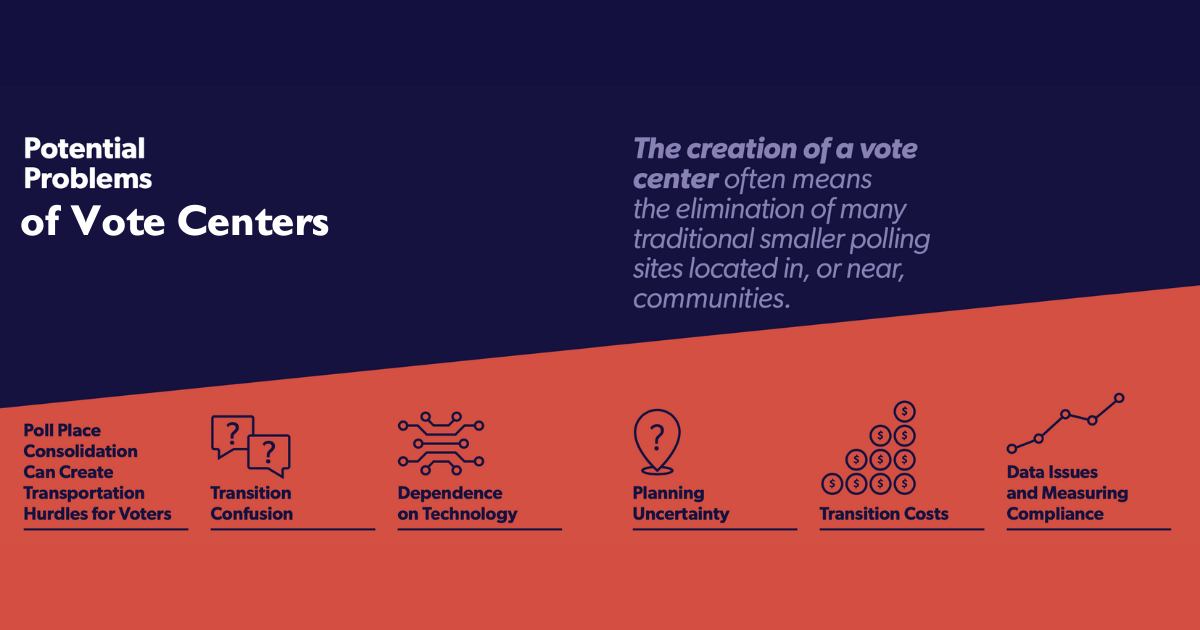Legislators and state and county election officials have a responsibility to protect the right to vote and to ensure that policies and decisions about where people cast a ballot do not prevent or discourage voters from doing so.
As states nationwide replace precinct polling places with vote centers – countywide locations where anyone can cast a ballot – election officials must choose locations in communities of color, ensure the sites are staffed with trained poll workers, and notify voters ahead of time of any changes.
The switch from precinct-based voting to countywide voting in vote centers is a reform with both promise and peril for voters. Such centers free people from the need to cast their ballots at a specific polling precinct near their homes, allowing them to vote instead at any center in their county. But they can also cause confusion for voters and make it harder to cast a ballot.
The following brief offers lessons learned from Florida, Texas and Arizona and provides concrete recommendations for state legislators and state and local election officials considering the move to vote centers.

Recommendations
- Choosing Locations: County officials must analyze if voters of color or voters with disabilities will be disadvantaged by the location of potential sites. Before they pick sites, officials must seek feedback from historically disenfranchised communities including: voters with disabilities and Black, Latino, Native American, and Asian American voters.
- Ballot & Poll Worker Requirements: Election officials must ensure poll workers are trained on new technology required for vote centers. Officials must prepare back-up plans so that voting doesn’t come to a standstill if technological problems arise.
- Notifying Voters: During the transition to vote centers, election officials must inform voters of new polling places and explain the concept of vote centers through traditional media, social media, and direct voter outreach.
- Measuring Impacts: Decision-makers must collect data on the impact of vote centers on turnout, efficiency, and the reduction of lost votes.